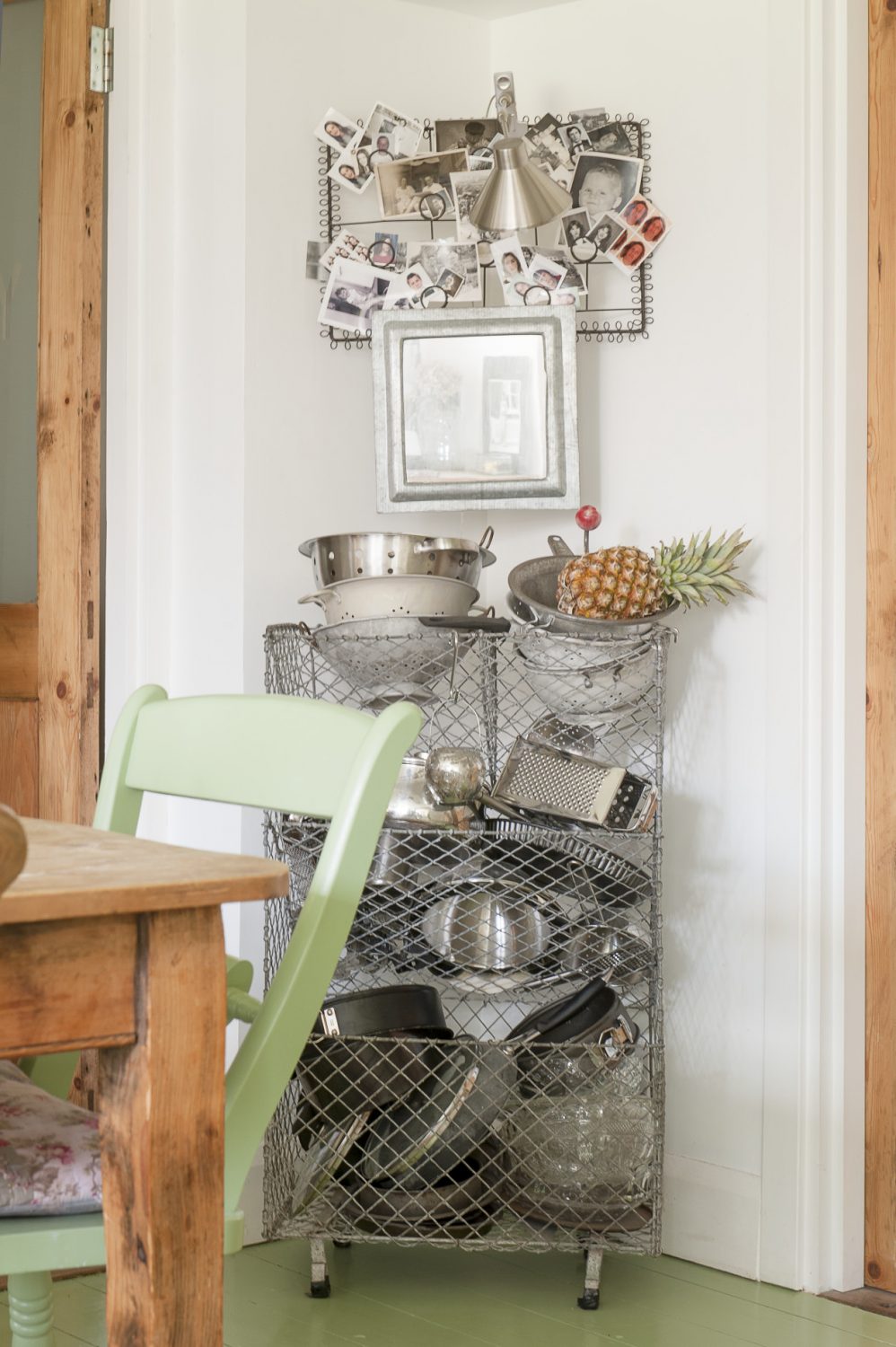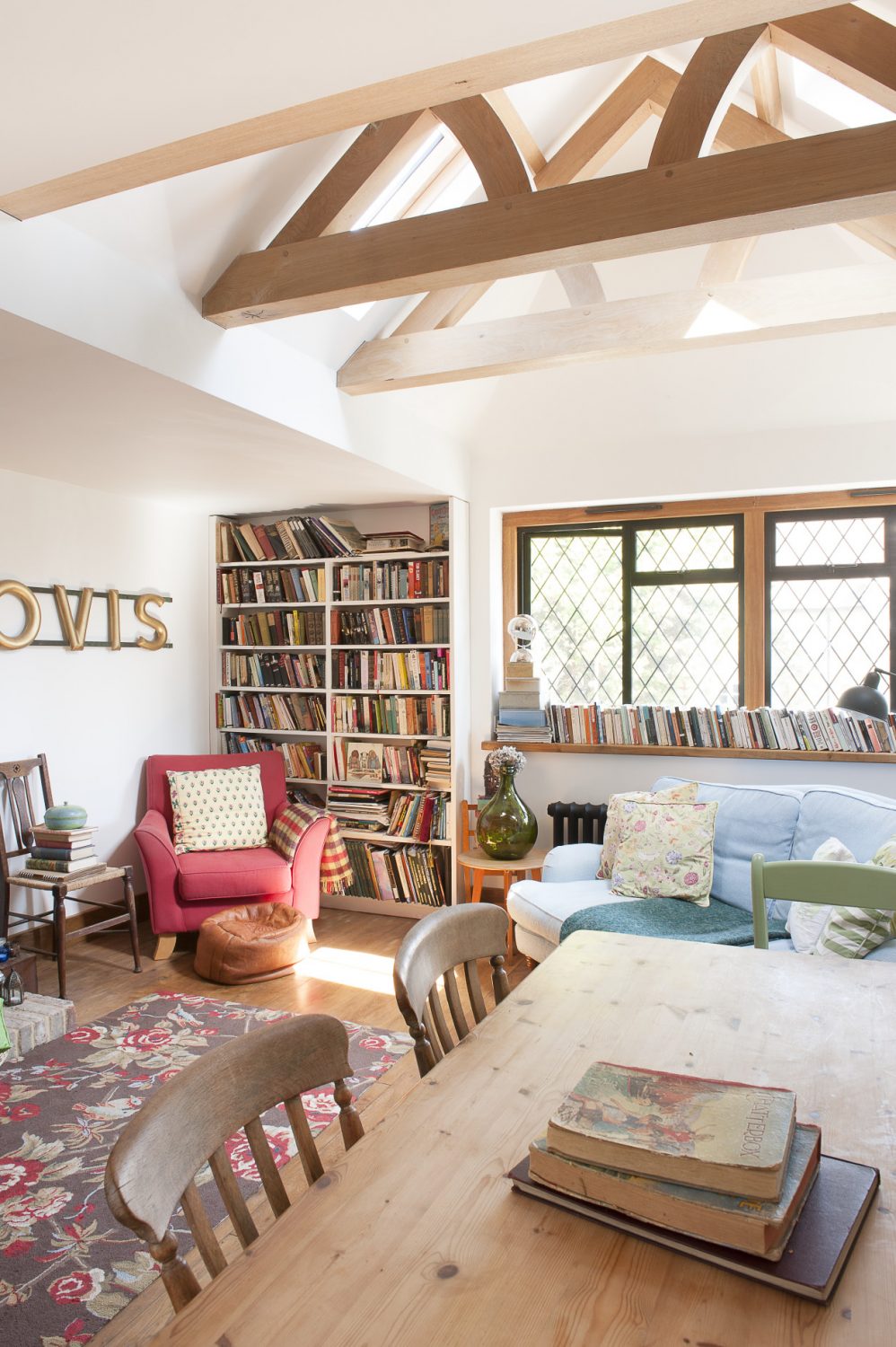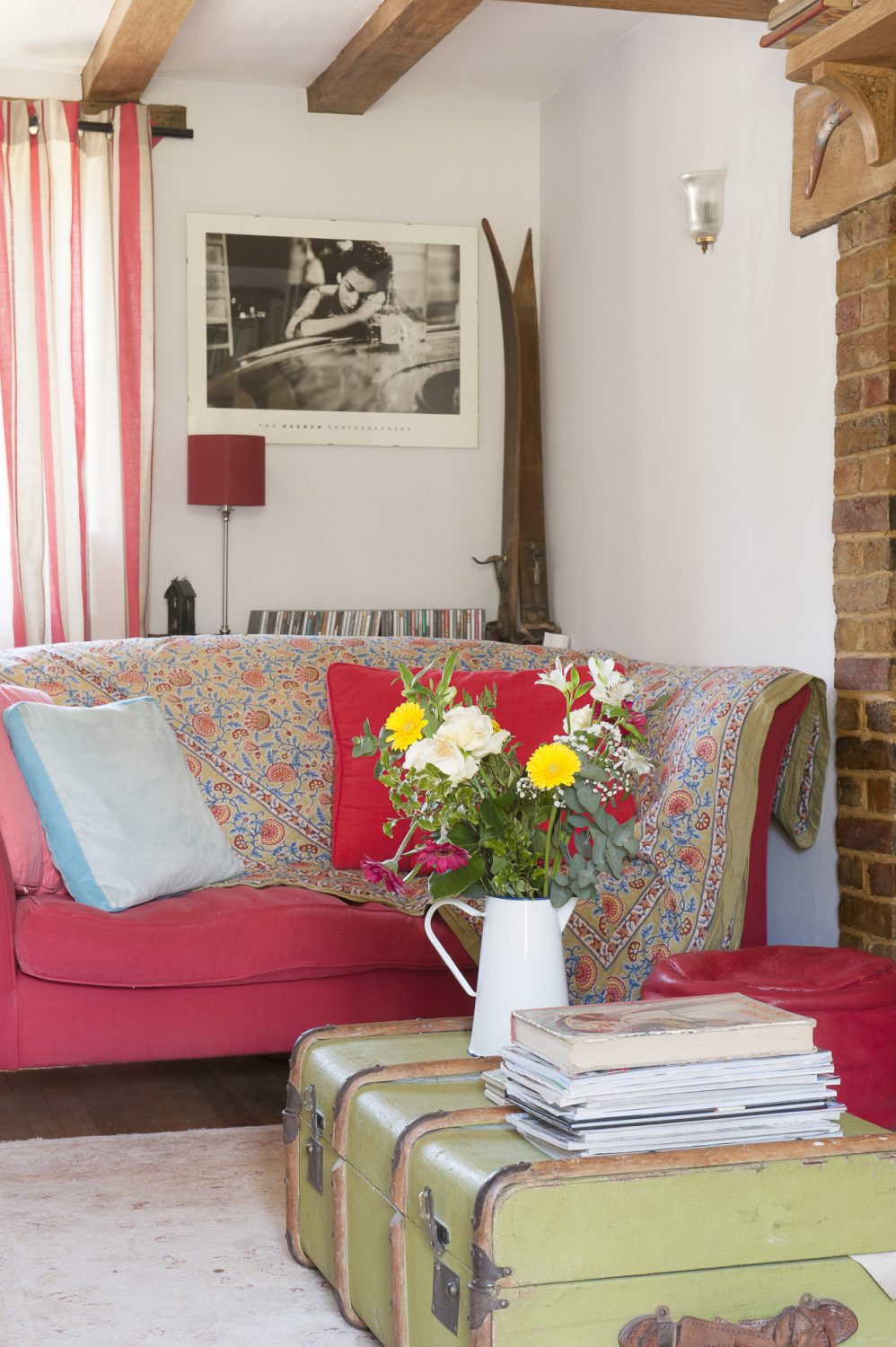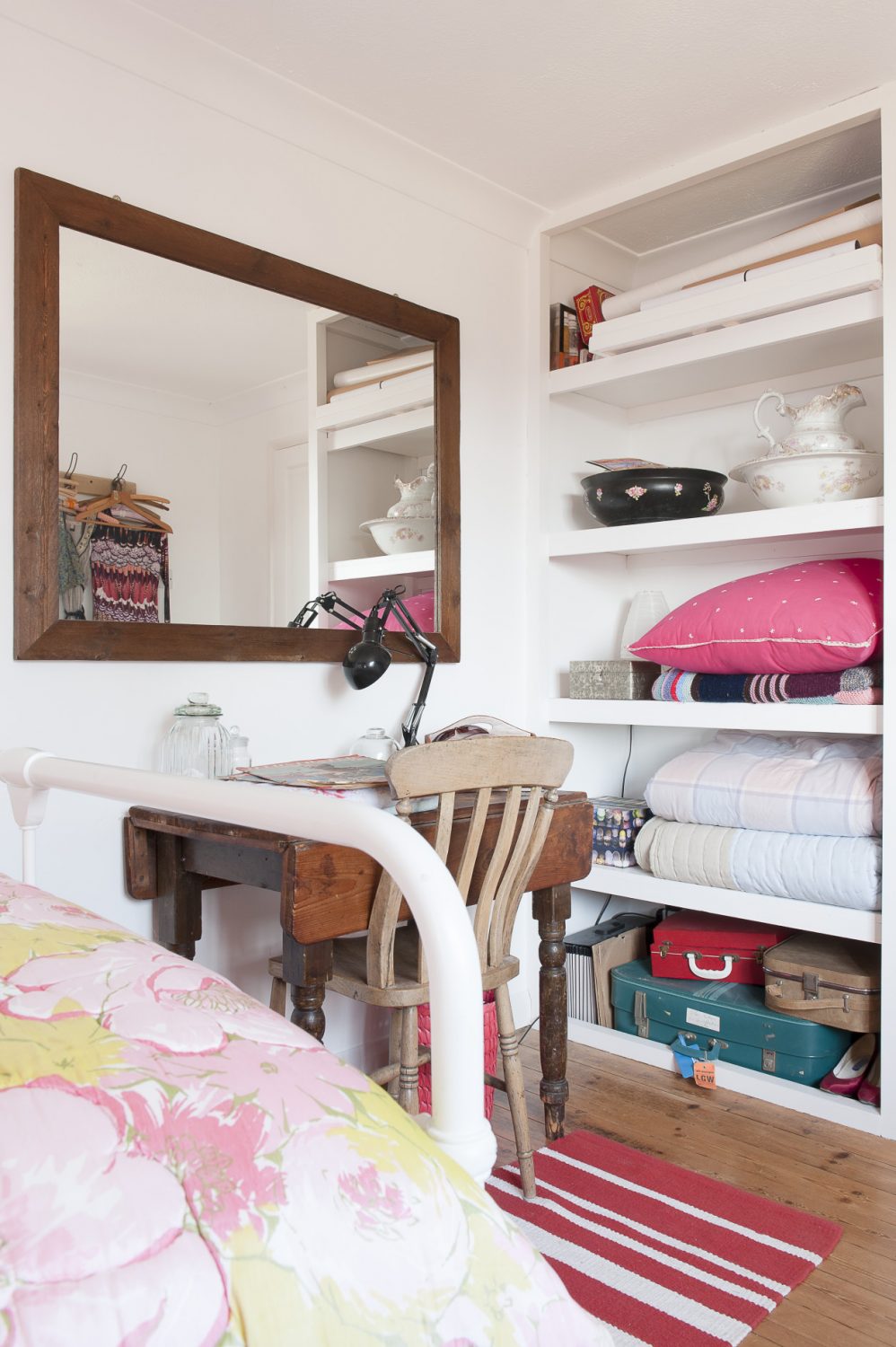Building new houses in traditional Wealden villages has always been a problem and one with which architects are still grappling today. Just how do you design a home that satisfies the varied needs of a modern family while ensuring it complements neighbouring properties designed for the rather less demanding villagers of the 16th century?
We all know a score of villages where those whose responsibility it was to achieve this, have all failed miserably. Throwing up a basic brick box and then tossing a handful of new tiles at the front elevation simply doesn’t hack it. Home owners deserve more and the villages deserve more.
However, even with an appreciation of the challenge and access to the latest materials and tricks of the trade, it’s not easy and requires both imagination and a true appreciation of the Weald’s unique architectural heritage. And yet, in the early 1970s when all sorts of architectural nasties were popping up in town and country, there was one unknown and unsung developer who built three new houses in a particularly pretty Wealden village and got it spot on.
One of them, Linden Cottage, is now the home of Liz, Andy, their three grown-up children and Roger the cockerel and his harem. Set back from its lane by a gravel forecourt and pretty cottage garden, it looks for all the world as if it has been standing on this idyllic spot since the Armada. And yet despite its traditional façade it is inside a bright, spacious and highly successful family home. Some measure of this success is that Liz and Andy moved in 20 years ago, watched their children grow into adulthood and still have no plans to forsake it for pastures new.
“When we first saw the house, I knew it was right for us and had potential,” says Liz, “but I didn’t think for a moment we’d still be here 20 years on but now I just can’t conceive of leaving. Perhaps, one day, we will move to the coast – we love the sea – but not in the foreseeable future.”
And it’s not difficult to see why. The developer’s attention to detail was outstanding. The whole building is almost entirely built of reclaimed 17th and 18th century materials – the bricks, Kent peg tiles and oak woodwork have all served in more ancient buildings and have brought myriad memories of their previous lives
to Linden.
Linden, however, is no mere pastiche of a period home. It’s awash with period features but has been cleverly designed to provide interest, space and light along with warmth and heritage – the best of all worlds.
One enters a hallway that soars up to a first floor gallery with light pouring in from the Crittall metal window set halfway up the stairs. The newel posts and handrails are truly magnificent pieces of ancient oak. An unusually small pale green Lloyd Loom chair stands at the foot of the stairs in front of an equally unusual antique pine desk. Nearby is an old travelling trunk topped by a wire garden basket upside down over a vase.
“I just put it there for fun one day and we decided we liked it,” says Liz. And that simple statement probably best encompasses her approach to interior décor. Everywhere are fun ideas that she likes and that work in spades because, quite simply, she has a natural eye for which no amount of rummaging through World of Interiors will ever be a substitute.
The kitchen is free standing with, at first sight, half the work surface space that the average cook would demand. The only surfaces are an extension of the un-oiled French oak draining board and a stripped pine table with painted green chairs.
“I just don’t like fitted kitchens, they’re all a bit sharp and angular,” she says. “I like the informality of a free-standing kitchen and as far as the work surfaces are concerned, I’ve never found myself needing more.”
Occupying premium space next to the sink is a lovely old set of 1950s grocer’s scales she picked up for £20 in Cranbrook Antiques. The last time I saw a set as nice was on eBay for £200. “I didn’t realise they were worth anything – I just liked them,” she says.
If there is one unifying theme that runs through Liz’s home it’s that whereas we might hide away the apparently uninteresting paraphernalia of day-to-day living, Liz puts it on show and somehow it ceases to be dull and commonplace and becomes interesting and even beautiful. In the kitchen, for instance, all her sieves and colanders hang from an old wooden orchard ladder suspended horizontally from the ceiling. In the corner are all her shining pots and pans in an old wire parcel rack that must have once graced a GPO depot.
And across the room, through the neighbouring space that was once the dining room, a whole wall is covered with white built-in shelving on which stands the contents of the average home’s kitchen cupboards and larder. Tins and jars on the left, teapots, crockery, candles and interesting old bottles in the centre and tumblers and wine glasses on the right. Who, other than Warhol, would have thought that a tin of soup could be of interest? But they are, nonetheless, the essence of a kitchen and here, together provide a lovely display. “I have to own up – I pinched the idea from Bill’s in Lewes,” admits Liz. Pinched or not, it was a great idea.
This area – now a comfortable snug with a two-seater chintz sofa and matching chair – was created when the couple knocked through the wall from the kitchen. Instead of the simple solution of a supporting concrete lintel across the dividing wall, the couple used an oak cross beam supported by oak pillars, the impressive timbers salvaged from the garage that they demolished to make room for a new dining room/utility extension.
The dining room is entered through double pine doors, half etched glass, and one cannot suppress an immediate ‘wow’. This is not so much a dining room as a dining chapel beneath a superb vaulted ceiling of terrific pale oak supports. Interestingly, the oak floor by Tudor Oak in Boughton Monchelsea is of boarding of differing widths.
“We thought that even sized boards would be too uniform and not really in keeping with the house as a whole,” says Liz. The woodburner and the informal pine dining table with its painted legs also add to the warm and relaxed ambience. On a wall is a huge gold ‘Hovis’ sign from an antique shop in St. John’s Road in Tunbridge Wells. Another wall displays a collection of art exhibition posters while a third wall and a windowsill are covered with an eclectic tumble of books. “A couple of armfuls came from a visit to the tip,” says Liz. “A man was throwing away a whole library of old books from a private school and I just had to save some. We’ll never read half of them but they are just lovely things to have.”
The beamed drawing room gathers round an inglenook with before it, serving as a coffee table, another old travelling trunk. Old suitcases and trunks are a recurring theme around the house – canvas, leather, wood bound – sometimes alone, sometimes in companionable piles. “I love them,” says Liz. “Each has a life and a story and, on a practical level they are wonderful storage so not only are they lovely pieces but they are seriously useful.”
The tan and deep red sofas are from Sofa Workshop and beside one stands a pile of wicker picnic baskets and old leather briefcases. The little rocking chair was bought from an antique shop in Staplehurst 35 years ago. By one wall stands an old umbrella stand full of croquet mallets and by another a stripped wardrobe with a wooden child’s sled on top. Nearby is Andy’s childhood bar skittles set and propped in a corner a pair of vast antique langlauf skis.
Parked against the wall opposite the fireplace is a church pew from Hastings Old Town scattered with gold and silver thread cushions that look like they should have come from Rajasthan but in fact, came from Edinburgh.
Upstairs, past black and white family photos – just a few of many of the generations past and present on walls upstairs and down – is yet another example of the effective display of possessions that most of us might keep shut away. Linen is usually stored in chests or cupboards but Liz keeps hers neatly and attractively in two elegant glass-fronted cabinets on the landing.
Centrepiece of the master bedroom is a pretty white Laura Ashley wrought-iron bed and beside it stands an old divided drawer tipped up on its end and now home to a selection of woollen sweaters. Beside the attractive pine wardrobe from Hastings Old Town is an old wooden step ladder which serves as a shoe rack. Lovely delicate and distressed double doors from Symonds Salvage in Bethersden lead through into an elegant mini-Tardis of an en suite.
Liz’s daughter’s room is suitably pink. Her white wrought-iron bed is dressed with pretty pink flowered linen from Fenwick and a lovely quilt which was Liz’s grandmother’s. Piled by the bed are some more wonderful old suitcases – yet more useful storage.
And so down and out to the garden, a classic cottage paradise with terraced arbor and a paved path, flanked by hydrangeas and tulips, leading down to a summerhouse and the domain of the family hen and portly cockerel Roger, so named, presumably, because that is his primary duty.
In all, Linden Cottage is a masterclass in how to create an original interior brimming with charm and interest, how to build sensitively in a traditional Wealden village and how to give heirloom objects a new life and purpose. Will they ever, I wonder, find their way into another home in another Wealden village? Personally, I very much hope not.
TEST
In the kitchen sieves and colanders hang from an old wooden orchard ladder suspended horizontally from the ceiling above the stripped pine dining table
TEST
In one corner of the kitchen Liz keeps all her shining pots and pans in an old wire parcel rack that must have once graced a GPO depot
TEST
Stacks of pristine plates and fresh eggs from Liz’s chickens are easily accessible from this painted green shelving unit
TEST
A spacious utility room with a soaring ceiling was created in part of the new extension that the couple built
TEST
A spacious utility room with a soaring ceiling was created in part of the new extension that the couple built
TEST
A spacious utility room with a soaring ceiling was created in part of the new extension that the couple built
TEST
If there is one unifying theme that runs through Liz’s home it’s that whereas we might hide away the apparently uninteresting paraphernalia of day-to-day living, Liz puts it on show and somehow it ceases to be dull and commonplace and becomes interesting and even beautiful
TEST
Etched glass doors lead off from the kitchen into the dining room and utility room
TEST
The bright dining room is filled with an eclectic mix of books rescued from the tip
TEST
A tiny door in the dining room opens into the hallway. An unusually small pale green Lloyd Loom chair stands at the foot of the stairs in front of an antique pine desk. To the left stands an old travelling trunk topped by a wire garden basket upside down over a vase
TEST
Framed exhibition posters are on display above a church pew from Hastings Old Town scattered with gold and silver thread cushions
TEST
Enlarged black and white family photographs are mounted along the ascent to the first floor gallery
TEST
Centrepiece of the master bedroom is a pretty white Laura Ashley wrought-iron bed and beside it stands an old divided drawer tipped up on its end and now home to a selection of woollen sweaters. Beside the attractive pine wardrobe from Hastings Old Town is an old wooden step ladder which serves as a shoe rack. Lovely delicate and distressed double doors from Symonds Salvage in Bethersden lead through into an elegant mini-Tardis of an en suite
TEST
Delicate and distressed double doors from Symonds Salvage in Bethersden lead through into an elegant en suite, where Liz has thoughtfully arranged a collection of old medicine bottles with mint-green towels and a group of lipstick red toothbrushes in a glass jar add a splash of colour
TEST
Upstairs, past black and white family photos – just a few of many of the generations past and present on walls upstairs and down – is yet another example of the effective display of possessions that most of us might keep shut away
TEST
Linden Cottage is a masterclass in how to create an original interior brimming with charm and interest
TEST
The bed in Liz’s daughter’s room is dressed with pretty pink flowered linen from Fenwick and a lovely quilt which was Liz’s grandmother’s. Piled by the bed are some more wonderful old suitcases – yet more useful storage
TEST
The pretty cottage garden, strung with reams of fabric bunting, has burst into life with an explosion of greens, pinks, reds and yellows
TEST
A terraced arbor and a paved path, flanked by daffodils, hydrangeas and tulips, lead down to a summerhouse and chicken coop
TEST


































